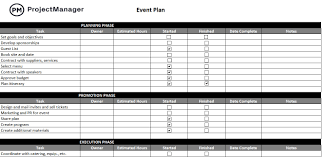The Power of Progressive Websites in Today’s Digital Landscape
In an era where technology plays a significant role in shaping our world, progressive websites have emerged as powerful tools for driving social change and promoting inclusivity. These websites are not just platforms for information dissemination; they are dynamic spaces that encourage engagement, foster collaboration, and amplify diverse voices.
What Makes a Website Progressive?
A progressive website goes beyond the traditional static web presence. It leverages interactive features, user-generated content, and community-building functionalities to create a vibrant online ecosystem. These websites prioritize accessibility, diversity, and equity, making them inclusive spaces for people from all walks of life.
The Impact of Progressive Websites
Progressive websites have the potential to catalyze social movements, raise awareness about important issues, and mobilize communities for collective action. By providing a platform for marginalized voices to be heard and empowering individuals to connect with like-minded peers, these websites contribute to building a more just and equitable society.
Key Features of Progressive Websites
- User Engagement: Interactive features such as forums, polls, and live chats encourage users to actively participate in discussions and activities on the website.
- Community Building: Progressive websites foster a sense of belonging by creating virtual communities where individuals can connect, share ideas, and collaborate on projects.
- Accessibility: These websites prioritize accessibility standards to ensure that all users, including those with disabilities, can easily navigate and interact with the content.
- Social Impact: By promoting social causes, raising awareness about important issues, and facilitating grassroots organizing efforts, progressive websites drive positive change in society.
The Future of Progressive Websites
As we continue to navigate an increasingly digital world, the importance of progressive websites in advancing social justice causes cannot be overstated. By harnessing the power of technology for good and creating online spaces that promote dialogue, collaboration, and activism, these websites are shaping the future of advocacy and community engagement.
In conclusion, progressive websites serve as catalysts for positive change in today’s digital landscape. By embracing innovation, inclusivity, and collaboration, these platforms empower individuals to make a difference and contribute to a more equitable society.
7 Ways Progressive Websites Drive Engagement, Community, and Social Change
- Encourages user engagement through interactive features
- Fosters a sense of community and belonging among users
- Prioritizes accessibility to ensure inclusivity for all users
- Promotes social impact by raising awareness and mobilizing communities
- Facilitates grassroots organizing efforts for social justice causes
- Drives positive change in society by advocating for important issues
- Shapes the future of advocacy and activism in the digital age
6 Challenges of Progressive Web Apps: Complexity, Load Times, and More
Encourages user engagement through interactive features
Progressive websites excel in fostering user engagement through a variety of interactive features that invite visitors to actively participate and contribute to the online experience. By incorporating elements such as forums, polls, live chats, and interactive multimedia content, these websites create dynamic environments where users can interact with each other, share ideas, and engage in meaningful discussions. This emphasis on interactivity not only enhances the user experience but also cultivates a sense of community and collaboration, ultimately empowering individuals to play an active role in shaping the content and direction of the website.
Fosters a sense of community and belonging among users
Progressive websites excel in fostering a sense of community and belonging among users by providing a virtual space where individuals can connect, share ideas, and collaborate on common goals. Through interactive features and user-generated content, these websites create a welcoming environment that encourages active participation and meaningful interactions. By promoting inclusivity and facilitating connections between like-minded individuals, progressive websites play a vital role in building strong communities that empower users to engage with one another, form relationships, and work together towards shared objectives.
Prioritizes accessibility to ensure inclusivity for all users
One key advantage of progressive websites is their commitment to prioritizing accessibility to ensure inclusivity for all users. By adhering to accessibility standards and implementing features that cater to diverse needs, progressive websites create a welcoming and inclusive online environment where individuals of all abilities can easily access and engage with the content. This focus on accessibility not only enhances the user experience but also reflects a dedication to equity and diversity, making the website a space where everyone can participate and contribute effectively.
Promotes social impact by raising awareness and mobilizing communities
Progressive websites play a crucial role in promoting social impact by effectively raising awareness and mobilizing communities around important issues. By providing a platform for information dissemination and facilitating dialogue, these websites empower individuals to become informed advocates for change. Through engaging content, interactive features, and strategic campaigns, progressive websites inspire collective action, foster solidarity among community members, and drive meaningful progress towards a more equitable and just society.
Facilitates grassroots organizing efforts for social justice causes
Progressive websites play a crucial role in facilitating grassroots organizing efforts for social justice causes. By providing a digital platform where like-minded individuals can connect, collaborate, and mobilize, these websites empower communities to amplify their voices and drive meaningful change. Through features such as event organizing tools, volunteer coordination resources, and information sharing capabilities, progressive websites enable grassroots activists to effectively strategize, communicate, and take collective action towards advancing social justice initiatives.
Drives positive change in society by advocating for important issues
Progressive websites play a crucial role in driving positive change in society by advocating for important issues. Through their platform, they raise awareness, mobilize communities, and amplify voices that may otherwise go unheard. By shining a spotlight on social justice causes, environmental concerns, human rights issues, and more, progressive websites inspire action and foster a collective sense of responsibility towards creating a better world for all. Their advocacy efforts contribute to shaping public discourse, influencing policy decisions, and ultimately making a tangible impact on the issues that matter most to our communities and our planet.
Shapes the future of advocacy and activism in the digital age
Progressive websites play a crucial role in shaping the future of advocacy and activism in the digital age by providing dynamic platforms for individuals and communities to amplify their voices, mobilize support, and drive social change. These websites leverage innovative technology and interactive features to facilitate meaningful dialogue, foster collaboration, and empower grassroots movements. By embracing inclusivity, accessibility, and user engagement, progressive websites are at the forefront of advancing social justice causes and promoting a more equitable society in the ever-evolving landscape of digital advocacy.
1. Complexity
Progressive websites, despite their many benefits, come with the con of complexity. Due to their advanced features and interactive functionalities, these websites may demand a higher level of technical expertise for development and maintenance. This increased complexity can pose challenges in managing the platform effectively, as it requires specialized knowledge and skills to address issues related to performance optimization, security updates, and troubleshooting. As a result, organizations considering the implementation of progressive websites need to be prepared for the additional resources and expertise required to navigate the intricacies of these dynamic online spaces.
2. Load Times
One drawback of progressive websites is the issue of load times. The inclusion of interactive features and dynamic content, while enhancing user engagement, can lead to slower loading speeds. This delay in loading may impact the overall user experience, as visitors may become impatient or frustrated waiting for the website to fully load. It is crucial for website developers to find a balance between incorporating interactive elements and ensuring optimal loading times to provide a seamless browsing experience for users.
3. Compatibility Issues
Compatibility issues pose a significant challenge for progressive websites, as not all browsers or devices may fully support the advanced functionalities they offer. This can result in a frustrating user experience for individuals who encounter compatibility issues, limiting their ability to engage effectively with the website’s content and features. Addressing these compatibility concerns is crucial to ensure that progressive websites can reach and resonate with a diverse audience across various platforms and devices.
4. Security Risks
The interactive nature of progressive websites, while fostering user engagement and collaboration, can also pose a significant con in terms of security risks. The dynamic features and user-generated content on these websites may create opportunities for cyber threats and data breaches. To mitigate these risks, it is essential for website administrators to implement robust security measures, such as encryption protocols, regular security audits, and user authentication processes, to safeguard sensitive user data and maintain the trust of their online community.
5. Cost
One significant drawback of progressive websites is the cost involved in building and maintaining them. Developing a feature-rich progressive website can be a substantial financial investment, which may pose challenges for organizations operating on limited resources or facing budget constraints. The expenses associated with implementing interactive features, ensuring accessibility standards, and providing ongoing support and updates can strain the financial capacity of such organizations, potentially hindering their ability to fully leverage the benefits of a progressive online platform.
6. User Adaptation
One significant con of progressive websites is user adaptation. Users who are accustomed to navigating traditional static websites may initially find the dynamic nature of progressive sites overwhelming or confusing. The interactive features, user-generated content, and community engagement elements present in progressive websites can sometimes lead to a steep learning curve for those more familiar with static web experiences. This initial challenge in adapting to the dynamic nature of progressive websites may hinder user engagement and limit the reach of these platforms among certain audiences.



